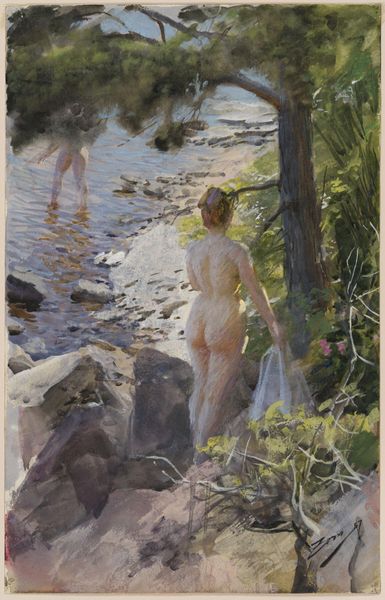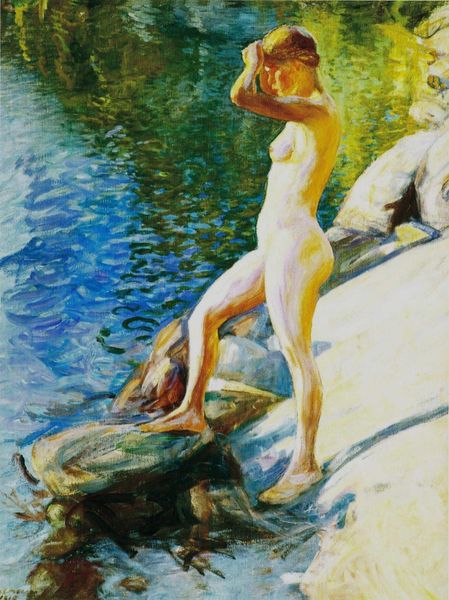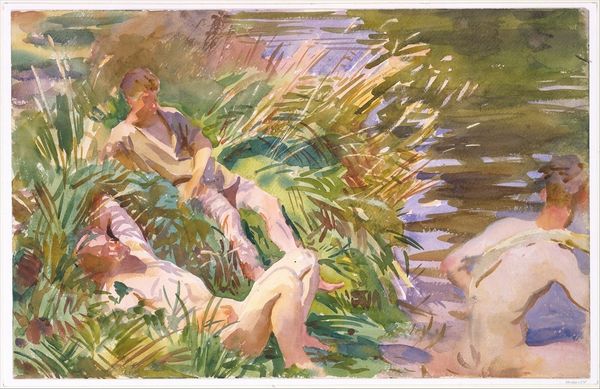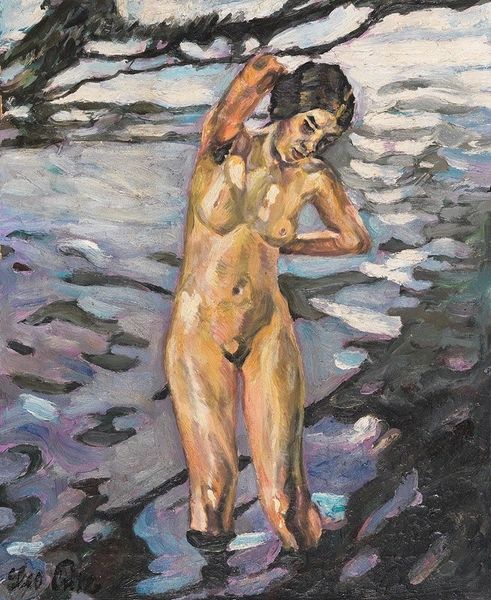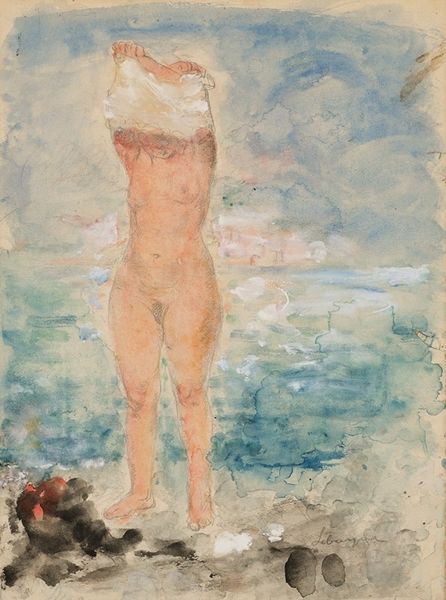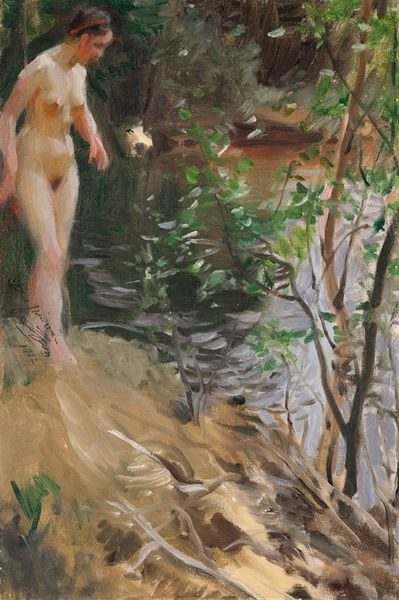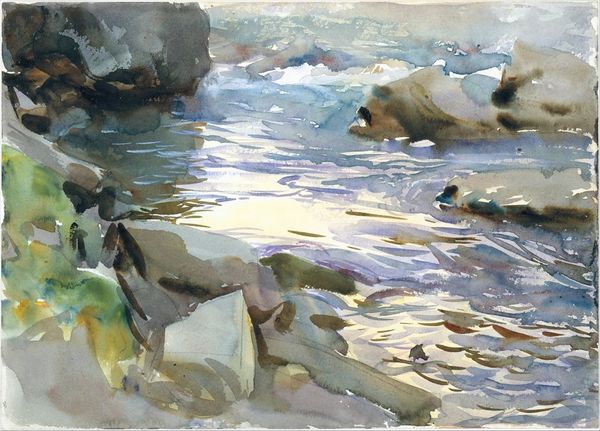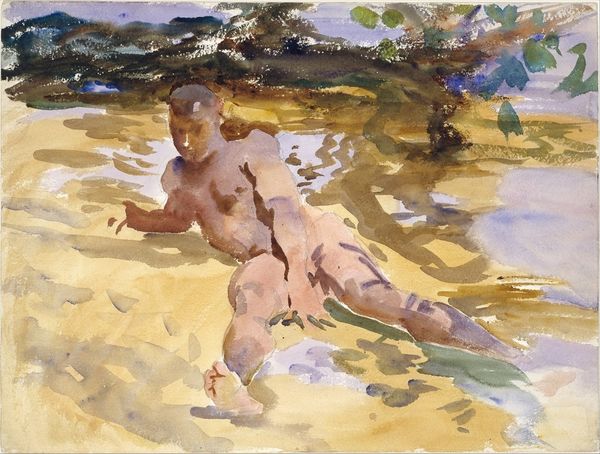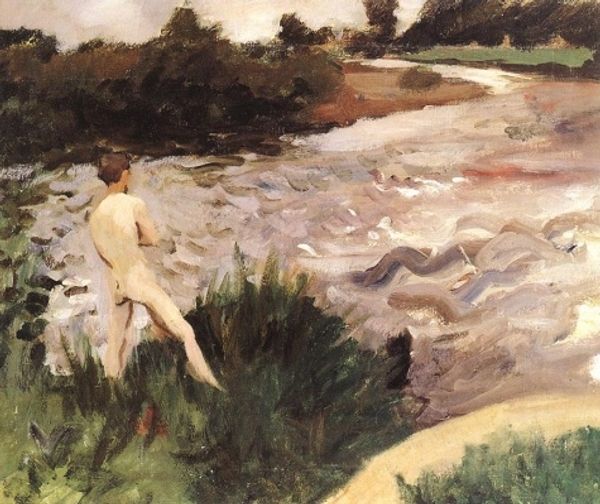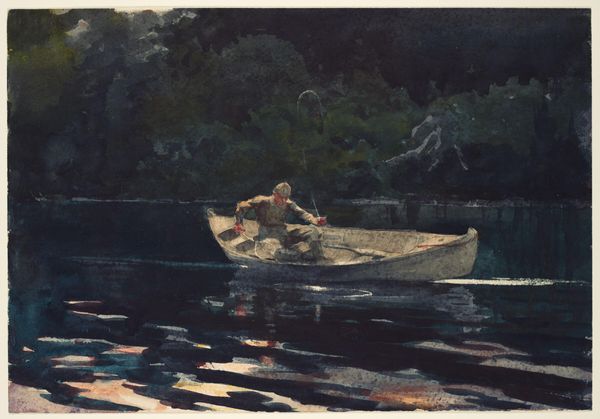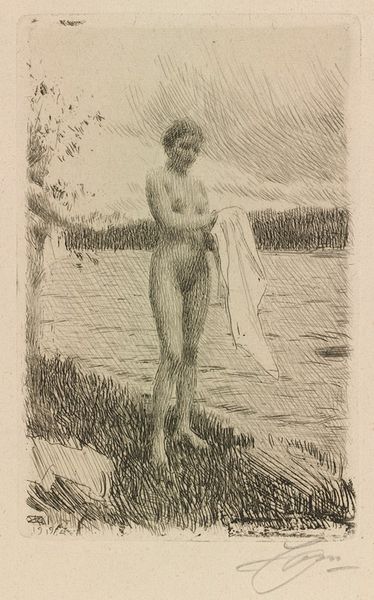
print, watercolor
# print
#
landscape
#
figuration
#
watercolor
#
nude
#
watercolor
Dimensions: 381 x 495 mm
Copyright: National Gallery of Art: CC0 1.0
Curator: John Whorf’s “The Bather,” a watercolor print created in 1942. It certainly evokes a mood of pensive stillness, wouldn’t you say? Editor: It does, but what grabs me first is the handling of the watercolor medium itself. Look at the paper's tooth showing through the washes, how the pigment pools at the edges of the rocks. The materials themselves seem to be contributing to the scene's reflective nature. Curator: It's tempting to see her as an echo of classic artistic tropes. Bathers were frequently depicted, but Whorf made this during World War II. Are we seeing a conscious decision to harken back to an earlier, less-troubled moment? Editor: Possibly, although focusing on its historical place tends to disregard how crucial it is to remember the labor that is required to manipulate the watercolour. We aren't simply seeing the representation of a bather. There are multiple, intentional layered applications and choices of colors and brush strokes made to construct the image from the ground up. Curator: Do you see that affecting the overall impact of the piece? Is this visible, demonstrable labor part of what makes it resonate today? Editor: Absolutely! Knowing this wasn't a single spontaneous creation forces us to consider Whorf's craftsmanship. Consider all these strokes of watercolor: they accumulate and shape the figure into an act of human making, drawing out her fragility and engagement in nature. Curator: Perhaps, then, her inward gaze suggests more than just reflection. It could also imply some form of escapism from societal pressures. We see similar ideas come out during the WPA era of American art that took place in this timeframe. Editor: I think it’s fair to add that seeing how a single material can suggest multiple effects gives us insight into that. The artist allows pigment and paper to be just as meaningful as subject. Curator: An interesting insight—and perhaps a reminder that the true complexity lies in recognizing both. Editor: It’s been useful for me to look at the details, like texture and technique that show the maker's hand at work to contextualize a work in both social terms and beyond.
Comments
No comments
Be the first to comment and join the conversation on the ultimate creative platform.
